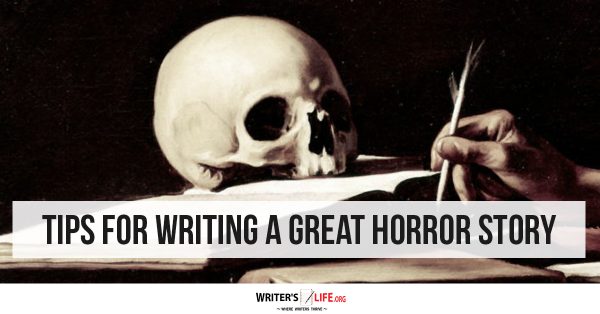- How To Tackle Jealousy In Creative Writing
- Common Submission Mistakes
- How To Stop Your Blog Becoming Boring
- The One Thing Every Successful Writer Has In Common
- How To Make Yourself Aware Of Publishing Scams
- Why Almost ALL Writers Make These Grammar Mistakes At Some Point
- 5 Tips For Authors On How To Deal With Rejection
- Top Mistakes to Avoid When Writing a Novel
- How to Avoid Common New Writer Mistakes
- 10 Mistakes New Fiction Writers Make
Tips For Writing A Great Horror Story

Horror continues to be a hugely popular genre, and with an audience always eager for more, writing a horror story can be advantageous if you are trying to get published or thinking of self-publishing your book.
But writing a horror story requires just as much thought and skill as any other genre of book, and needs to be carefully crafted to keep readers on the edge of their seats and desperate yet terrified of what might be revealed with each page they turn.
Writing a horror story allows writers to get in touch with their dark side, to explore what scares them and could end up being a brilliantly cathartic project as they face their fears and demons along the way.
Are you thinking about writing horror? Here are some helpful tips:
What are you afraid of?
Start out by exploring what makes the hairs on the back of your arms stand up and shivers run up and down your spine. Think about the worst things that could happen, the wickedest deeds that someone could do, terrifying situations to be in. Write these down and see if any themes emerge.
Pick your sub-genre
There is a vast variety of different sub-genres within the horror genre. Are you interested in writing a nail-biting thriller, a haunting mystery, a no holds barred gruesome murder story? A horror story can be terrifying, revolting, or creepy or a mixture of all of them. Think about the kind of tale you want to tell and use that as the base to explore your story further.
Read, read, read
The best way to learn about writing a horror story is to read lots of books in that genre. So make sure you do your research and read as much as you possibly can.
Build tension
A horror story is all about building tension. Making your readers feeling unsafe and unsettled even in everyday situations can be a brilliant way of creating a sense of anxiety and apprehension. Taking the everyday and turning it into a horrifying situation can be acutely affecting. So while a dark and stormy night might fit a particular scene, a trip to the park or doing the washing up with the windows open on a sunny summer’s afternoon could be a more effective setting for something gruesome to take place.
Create distinctive characters
In the majority of horror stories, there are the characters who are being terrified and those who are imparting that terror upon them! Make sure that your readers care about your characters and what happens to them. Your readers need to be rooting for your characters to survive - if they don’t care about them it will be harder for them to get involved in the story and to feel the horror, the desperate fear and the tension as they do.
Become an expert at emotion
Shock, dread, anxiety, paranoia - these are all extreme emotions and ones that we should see crop up in a horror story. Evoking these emotions through your writing and the ways your characters speak and behave will make all the difference when it comes to creating a successful horror story.
Start as you mean to go on
Don’t wait to introduce horrifying or unsettling details into your story, get stuck in and use your opening scene to show the reader you mean business. They’ve chosen to read a book in the horror genre because that’s what they like so don’t be afraid to get straight to scaring them at the beginning of your book.
Don’t forget about the plot
It’s all too easy to focus on the gruesome and terrifying elements of a horror story and forget about everything else. However, it is important to remember that horror stories still need well-crafted plots that take the readers on a journey and have a beginning and middle and an end.
There are so many interesting and exciting ways to write a horror story. Use the about tips as a guide to get you started and then let the dark side of your imagination run wild!

Bethany Cadman -author of 'Doctor Vanilla's Sunflowers'




















